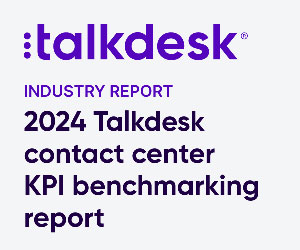Inbenta share their advice for building a chatbot that can provide simple self-service to customers.
Chatbots Magazine found that 67% of US millennials said they are likely to purchase products and services from brands using a chatbot.
According to HubSpot: “47% of shoppers are open to purchasing items through a bot.”
In this context, is critical for brands to seriously consider implementing a transactional chatbot on their website if they haven’t already done so. This is also a good reason to clearly define what transactional chatbots are, how they work, and what they’re used for.
What Is a Transactional Chatbot?
A transactional chatbot acts as an agent on behalf of humans and interacts with external systems in order to accomplish a specific action.
As such, a transactional chatbot is different from the most common bots, also called informative or conversational chatbots, in the sense that its goal is to automate a transaction and to simplify the user experience by providing a quick, convenient channel for one specific purpose.
It is optimized to execute a limited number of specialized processes that replace the need to talk to an expert or use more complicated interfaces such as mobile apps or websites.
As a consequence of connecting to external systems, answers provided by transactional chatbots are dynamic, meaning that they can vary depending on the data contained in those external platforms.
On the other hand, informational bots provide static answers: ask the same question and you will get the same answer over and over again.
How Does a Transactional Chatbot Work?
Being designed to perform only a few tasks doesn’t mean that a transactional chatbot is a basic and limited bot. On the contrary, it can be quite intelligent and able to understand natural language thanks to the right technology.
Symbolic AI and natural language processing is what makes the whole difference between a basic bot and a transactional chatbot developed by a leading bot provider. Inbenta, for example, take this approach.
Symbolic AI is a branch of artificial intelligence that implements natural language processing using patented algorithms, and Inbenta Lexicon is a proprietary database that describes a human language and the world in general, using symbols and their semantic relationships.
Combining their technology with their Lexicon enables Inbenta chatbots to understand the users’ questions and to select and provide the proper answer between several possible responses.
Transactional Chatbot Use-Cases
So now you know what transactional chatbots are and how they work, let’s see what they can do.
Transactional chatbots can be implemented in various sectors such as banking, insurance or e-commerce.
In the financial sector, for example, they can automate simple tasks that would otherwise be performed by a bank operator over the phone, such as verifying your identity, blocking your stolen credit card, giving you the working hours of nearby branches or confirming an outgoing transfer.
An insurance company can use a transactional chatbot in order to provide a quote to potential customers or download an insurance certificate to its customers.
Most elaborate transactional chatbots can even go further and convert prospective customers without leaving the chatbot platform.
If the quote meets the user’s budget and requirements, they can then directly sign up by providing the requested information to the bot, which will then send them the contract and documentation.
This use-case can also be applied to energy companies or mobile phone providers.
In the e-commerce sector, a transactional chatbot can help the user filter products to find what they’re looking for and eventually make a purchase. It can also be used to modify or cancel an order if needed.
Author: Inbenta
Published On: 25th Sep 2020 - Last modified: 17th Apr 2024
Read more about - Latest News, Chatbots, Inbenta















